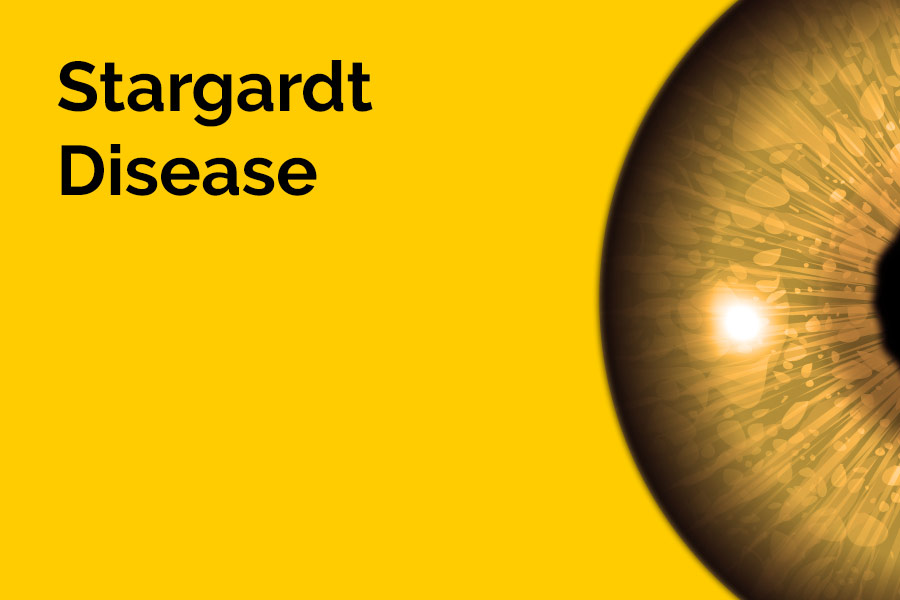Stargardt Disease
Stargardt disease is the most common form of inherited juvenile macular degeneration affecting 1 in every 8,000 to 10,000 people. The disease affects causes the light-sensitive cells in the macular region of the eye to degenerate.
Symptoms
The most common symptom of Stargardt disease is variable, often slow loss of central vision in both eyes. People with Stargardt disease often notice grey, black or hazy spots in the centre of their vision, or that it takes longer than normal for their eyes to adjust when moving from a light to a dark environment. They may experience increased sensitivity to light and in some cases develop colour blindness at a later stage of the disease.
The progression of symptoms varies for each different person. Those with an earlier onset of the disease tend to lose vision rapidly. Vision loss may start off slowly, then worsen rapidly until it levels off. The majority of people with Stargardt disease will end up with 20/200 vision or worse. They may also begin to lose some of their peripheral vision as they grow older.
Diagnosis, Screening and Tests
An eye care professional is able to diagnose Stargardt disease by examining the retina. Lipofuscin deposits can be seen as yellowish specs in the macula. These flecks are irregular in shape and usually extend outwards from the macula in a ring-like pattern. The appearance, colour, size and number of these flecks will vary from person to person.
Several tests can be used to diagnosis the condition including:
- Visual field testing: This test attempts to measure distribution and sensitivity of field of vision. Several methods of testing are available; none are painful and most share a requirement for the patient to indicate an ability to see a stimulus/target. The process results in a map of the person’s visual field and can point to a loss of central vision or peripheral vision.
Several tests can be carried out to detect loss of colour vision that can occur late in Stargardt disease. Three tests are often used to get additional information; optical coherence tomography, electroretinography and fundus photography combined with autofluorescence.
- Optical coherence tomography or OCT is a scanning device that works similar to an ultrasound. While ultrasound captures images by bouncing sound waves off of living tissues, OCT does it with light waves. The patient places his or her head on a chin rest while an invisible, near-infrared light is focused on the retina. Because our eyes are designed to allow light in, it is possible to get very detailed images deep within the retina. These pictures can then be analysed for any abnormalities in the thickness of the retinal layers, which can indicate retinal degeneration. OCT can be combined with infrared scanning laser ophthalmoscope to provide additional surface images of the retina.
- Electroretinography or ERG measures the electrical responses of rods and cones to light. During the test, an electrode is placed on the cornea and light is flashed into the eye. The electrical responses are viewed and recorded on a monitor. Abnormal patterns of light response suggest the presence of Stargardt disease or other diseases that involve retinal degeneration.
- A fundus photo is a picture of the retina. These photos are able to reveal the presence of lipofuscin deposits. In fundus autofluorescence (FA), a special filter is used to detect lipofuscin. Lipofuscin is naturally fluorescent when a specific wavelength of light is shined into the eye. This test can detect lipofuscin that might not be visible with standard fundus photography, making it possible to diagnose Stargardt earlier.
Treatments
Unfortunately, there are currently no treatments for Stargardt disease. Research and developments in gene therapy and stem cells are very active so it is hoped that this may lead to treatments becoming available at some point in the near future.
Prevention
Research has shown that exposure to ultraviolet light may cause further retinal damage. For this reason, it is very important to wear sunglasses with a high level of UV protection and/or a wide-brimmed hat to shield your eyes from the sun.
